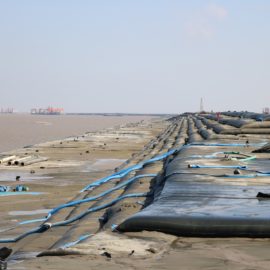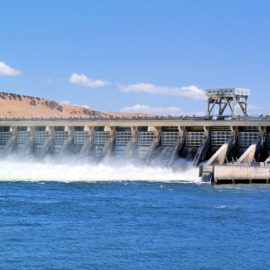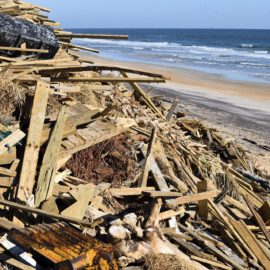
It has been talked about. It has been discussed. Not the big step where there will be more talking and discussion. The $1.35 billion coastal and hurricane restoration bill is not to the legislature.
Seeking to protect storm-vulnerable communities, the state Coastal Protection and Restoration Authority on Wednesday approved a plan to spend $1.35 billion on hurricane levees and coastal restoration projects in fiscal year 2023. The 21-member board unanimously agreed to forward its proposed spending plan to the state Legislature, which has the final say on the matter. If approved, it will be the first time in 15 years that the state has spent over $1 billion to shore up its levees and coast. The plan, which would be entirely funded with state money, includes construction funds for 92 projects, engineering and design money for another 41 projects, and planning money for nine projects.
nola.com
Among the projects to be done include these bigger ones.
In southeast Louisiana, 58 projects would be funded, including major wetlands restoration projects along Lake Borgne and in the LaBranche wetlands along Lake Pontchartrain. The Spanish Pass increment of the Barataria Basin ridge and marsh restoration project in Plaquemines Parish would also be funded, according to the plan. The state would also pay for of the cost of levees and floodwalls at Rosethorne and Pailet Basin in the Lafitte area, parts of the New Orleans to Venice levee system in Plaquemines Parish, and part of the West Shore Lake Pontchartrain levee in St. Charles, St. John the Baptist and St. James parishes. Part of the design costs for the Upper Barataria Basin hurricane levee project on the west bank would also be covered, as would shoreline protection projects along the Jefferson Parish Lake Pontchartrain lakefront and at Port Fourchon. The state would also fund a flood risk feasibility study for the Lafitte area.
A good number of projects that definitely will help. The Corps has also updated their thoughts on flood reduction.
Also on Wednesday, Army Corps of Engineers officials updated authority members on the progress of several studies aimed at developing new flood reduction projects in St. Tammany Parish, along the Amite River, and elsewhere in the state. Congress approved three-year studies of those projects in 2018, but in several cases, the Corps has either halted a study because of complications, or plans to return to Congress to ask for more time and more money to complete the work, officials said. For example, a study aimed at building the proposed Darlington Dry Dam – aimed at relieving flooding on the Amite River through heavily populated areas of East Baton Rouge, Ascension and Livingston parishes — was initally paused because of concerns about the potential damage to those living downstream, should the project fail during a major flooding incident. The Corps also needed to look into potential “environmental justice” issues involving the effects of the project on communities to the north of the dam’s location, officials said. Now, the Corps is now asking Congress for an additional $1.9 million and 28 months to complete the study, which also will include a review of additional so-called “nonstructural” alternatives, such as elevating or relocating homes in low areas south of the dam location that are now subject to flooding, said Sarah Bradley, a project manager with the Corps’ New Orleans District office.

The St Tammany project is on hold for more information.
The Corps also needs Congressional approval for an 18-month delay in completing a flood feasibility study for St. Tammany Parish, which also will require an additional $1.8 million in funding, officials told the authority. An initial version of the study called for a $4 billion project that would reduce flooding risk to 15,000 parish residents. The project calls for building a U-shaped levee around parts of Slidell to protect it from storm surges caused by a hurricane with a 1 percent chance of occurring in any year, a so-called 100-year storm. It also proposes spending $2.2 billion on a nonstructural part of the project, to elevate more than 6,600 homes up to 13 feet and more than 1,850 nonresidential buildings up to 3 feet. The Corps also is beginning work on a new study of flood and coastal storm risk management for Tangipahoa Parish. That study will be paid for by $3.2 million that was included in a recent Congressional disaster relief supplemental appropriations bill, though the money has not yet been received by the Corps’ New Orleans office. The state also must still sign an agreement to pay its share of the study costs with the Corps, officials said.
This bill need to be approved quickly and set to the governor to sign. The projects will help the state.



